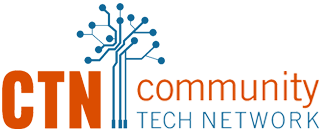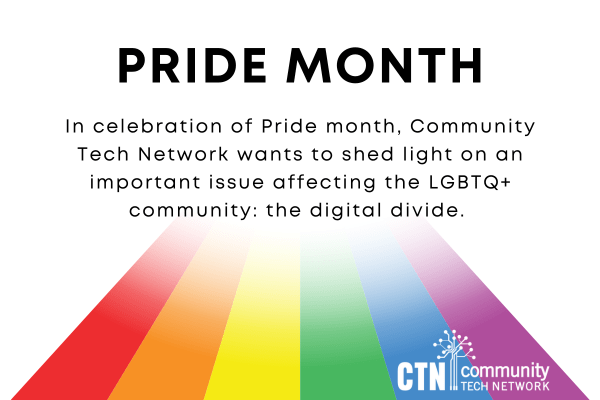In celebration of Pride month, Community Tech Network wants to shed light on an important issue affecting the LGBTQ+ community: the digital divide.
While advancements in technology have brought about significant progress in society, a significant gap persists, depriving many LGBTQ+ individuals of the benefits and opportunities the digital world offers. In this blog post, we explore the challenges faced by the LGBTQ+ community in accessing and utilizing technology, discuss the importance of digital access for building community and accessing services, and address the issue of offline LGBTQ+ subsets, including homeless youth.
The digital divide refers to the gap between those who have access to digital technologies and those who do not. Unfortunately, this divide disproportionately affects marginalized communities, including the LGBTQ+ community.
In today’s society, digital access is crucial for all. From searching for jobs online, keeping in touch with family and friends, and even reading the menus at restaurants, we use technology for just about everything.
However, for LGBTQ+ communities, the internet has proven even more important, as it can serve as a vital lifeline for seeking supportive communities. Online platforms and social media allow individuals to connect with like-minded individuals, find support networks, and access resources that may not be available locally. Online communities create safe spaces for LGBTQ+ individuals, especially those in areas with limited physical LGBTQ+ support.
Moreover, digital access is instrumental in accessing crucial services for LGBTQ+ individuals. Many organizations provide virtual counseling, support hotlines, and resources for mental health, LGBTQ+ healthcare, legal assistance, and more. For those who may face barriers to physical services due to discrimination or geographic limitations, online access becomes a lifeline.
Nevertheless, not all LGBTQ+ folks have access to technology. Low-income LGBTQ+ individuals often face financial barriers that prevent them from purchasing devices or accessing reliable internet connections. Additionally, older LGBTQ+ individuals who may have grown up during a time of limited technological advancement may struggle to adapt to new technologies, widening the generational gap.
In particular, certain subsets of the LGBTQ+ population are particularly affected, especially those that are facing homelessness. Up to 40% of homeless youth identify as LGBTQ, and one in five trans individuals have experienced homelessness at some point in their life. Homeless LGBTQ+ often lack regular access to digital devices or internet connections. This exacerbates their social isolation and limits their ability to access support services, educational opportunities, and employment resources available online.
This Pride month, let us recommit ourselves to bridging the digital divide to ensure that no one is left behind.


Comments are closed.